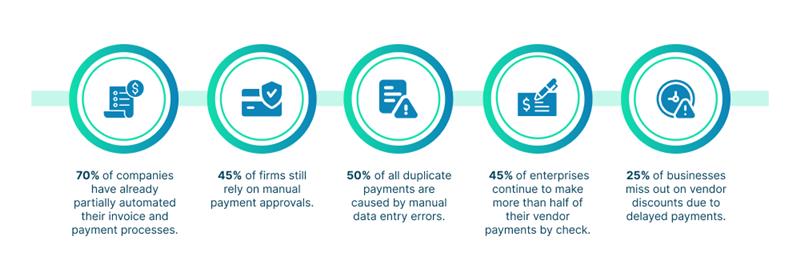Payment Reconciliation
Validating Every Penny: How leading enterprises audit payment costs without lifting a finger
Explore how top enterprises automate payment cost audits with advanced technology, ensuring every transaction is validated for accuracy without manual effort.

Amrit Mohanty
Jul 1, 2025 (Last Updated: Oct 16, 2025)

Modern enterprises process a large number of digital transactions monthly, each one incurring its own fees. These include gateway fees, MDR (Merchant Discount Rate), interchange, cross-border, chargebacks, and others. With multiple payment partners pushing through complex and often opaque decentralized (non-standardized) fee structures, even minor errors can snowball into millions of dollars of financial loss annually if these go untracked. Traditionally, validating these fees required written, manual reconciliation; using excel spreadsheets, line-item by line-item comparisons, tracking down discrepancies, etc. This was not only time-consuming, but also prone to human error.
The shift from manual to automated auditing processes
Manual audit of payments is fraught with problems that can severely impact the bottom line of an organization. Problems include things like data-entry-related errors, missed discounts from vendors, higher risks of fraud, and time-consuming reconciliations, just to name a few. Research suggests that as much as 50% of duplicate payments result from employee error and approximately 25% of organizations lose out on early payment discounts because of manual processing delays. Not only do these problems drive up operational costs, they increase an organization's exposure to risk. So, more than 40% of organizations now see automation as a necessary strategy to streamline workflows, improve costs, and reduce the possibility of fraud in the accounts payable and payment auditing space.
Core drivers for automation

- Accuracy: Automated systems validate every transaction, reducing errors and revenue leakage.
- Speed: Real-time reconciliation and anomaly detection accelerate the audit cycle.
- Compliance: Automated audit trails and compliance checks ensure regulatory adherence.
- Cost savings: By eliminating manual tasks, enterprises save on labor and avoid costly mistakes.
How enterprises achieve transaction-level fee validation
1. Data collection and integration
Modern audit applications connect to ERP, billing, and banking platforms, automatically collecting payment data from various sources of payments (including invoices, purchase orders and receipts, or electronic payment documentation). In practice, a large multinational retailer can aggregate purchasing data from hundreds of point-of-sale (POS) systems, aggregating the data for a comprehensive view of activity across the enterprise.
2. Automated validation and reconciliation
AI and machine learning tools can cross-check payment information against contracts, purchase orders, or receipts, and report exceptions in real time. This cross-checking means every fee, charge and payment is validated at the transaction level—independently of each other.
3. Real-Time analytics and anomaly detection
Automated systems provide a continuous review of payment data, using independent algorithms to find anomalies including over-billing, payments not approved, and outlier fees. Rather than forcing the finance team to comb through every transaction, dashboards and reporting show the finance team if exceptions occur, directing their review only to any exceptions.
4. Comprehensive audit trails and reporting
Automation platforms generate detailed, immutable audit trails for every payment-related activity, supporting compliance with regulations like SOX, GAAP, and GDPR. Automated reports are customizable for different stakeholders, ensuring transparency and readiness for external audits at any time.
Real-World use cases: minimal human effort, maximum control
Why manual effort is no longer needed
As automation matures, the need for human intervention is increasingly limited to exception handling and strategic oversight. Modern systems now:
- Extract and normalize data from a wide range of formats, including PDFs, scanned images, and e-invoices, ensuring seamless integration.
- Instantly match payments to contracts, purchase orders, and receipts,
- eliminating manual cross-checking and reducing errors.
- Flag only genuine exceptions for human review, allowing teams to focus on resolving critical discrepancies rather than routine tasks.
- Generate compliance-ready reports on demand, simplifying audits and regulatory requirements.
This evolution not only slashes operational costs but also empowers finance teams to concentrate on analysis, forecasting, and other high-value activities.
The future of effortless payment auditing
Organizations that invest in automation for payment validation and audit purposes are setting themselves up for a future beyond short-term cost-cutting. By utilizing AI-powered resources, these firms can achieve transaction-level accuracy as well as real-time visibility into the performance of financial operations, enabling leaders to make quicker decisions in a way that is timely and data-driven.
Automated systems will create bulletproof compliance with regulatory obligations, meaning organizations are audit ready at any moment and will lessen the risk of litigation or costs associated with errors or fraud. Ultimately, and most importantly, automation makes it very easy to scale—companies can simply deal with large increases in transaction volume without having to increase headcount at the same rate, increasing operational efficiency, along with a sustainable competitive advantage in a rapidly-changing environment.
Ready for effortless audit-readiness? Meet Optimus
Optimus is a next-generation, AI-powered payment reconciliation platform trusted by Fortune 500 enterprises to ensure financial accuracy at the transaction level—guaranteeing zero revenue leakage and seamless audit-readiness. Optimus automates data gathering, validation, and reporting across multiple regions and currencies, all while maintaining the highest levels of security and compliance (PCI DSS certified).
Key Highlights:
- Real-time, AI-driven reconciliation and anomaly detection
- Effortless scaling without increasing team size
- PCI DSS compliant, ensuring top-tier data security
- Comprehensive, audit-ready reporting for any regulatory standard
- Trusted by leading global enterprises for mission-critical payment operations
Transform your payment audits from a manual burden to an automated advantage. Discover how Optimus can make your enterprise audit-ready—without lifting a finger.
For more information and real-world case studies, visit Optimus at optimus.tech.

